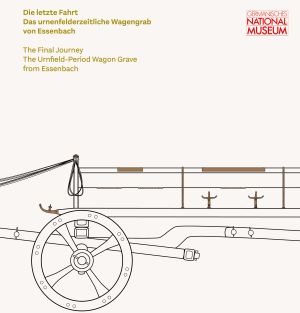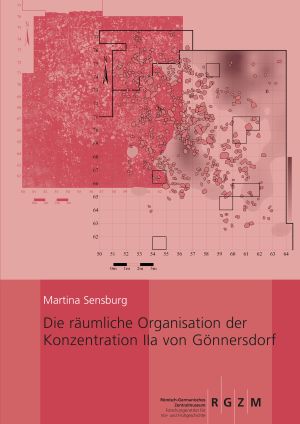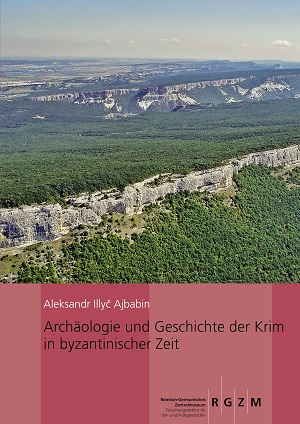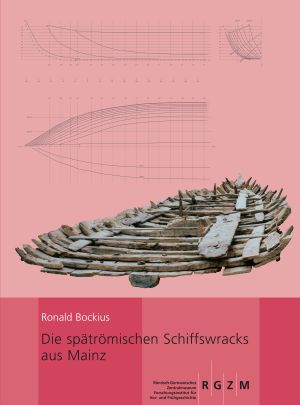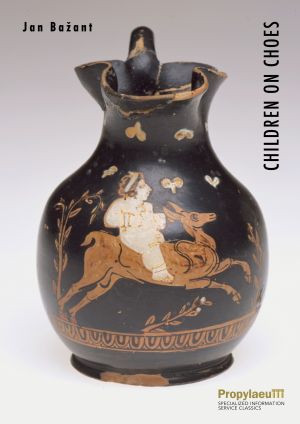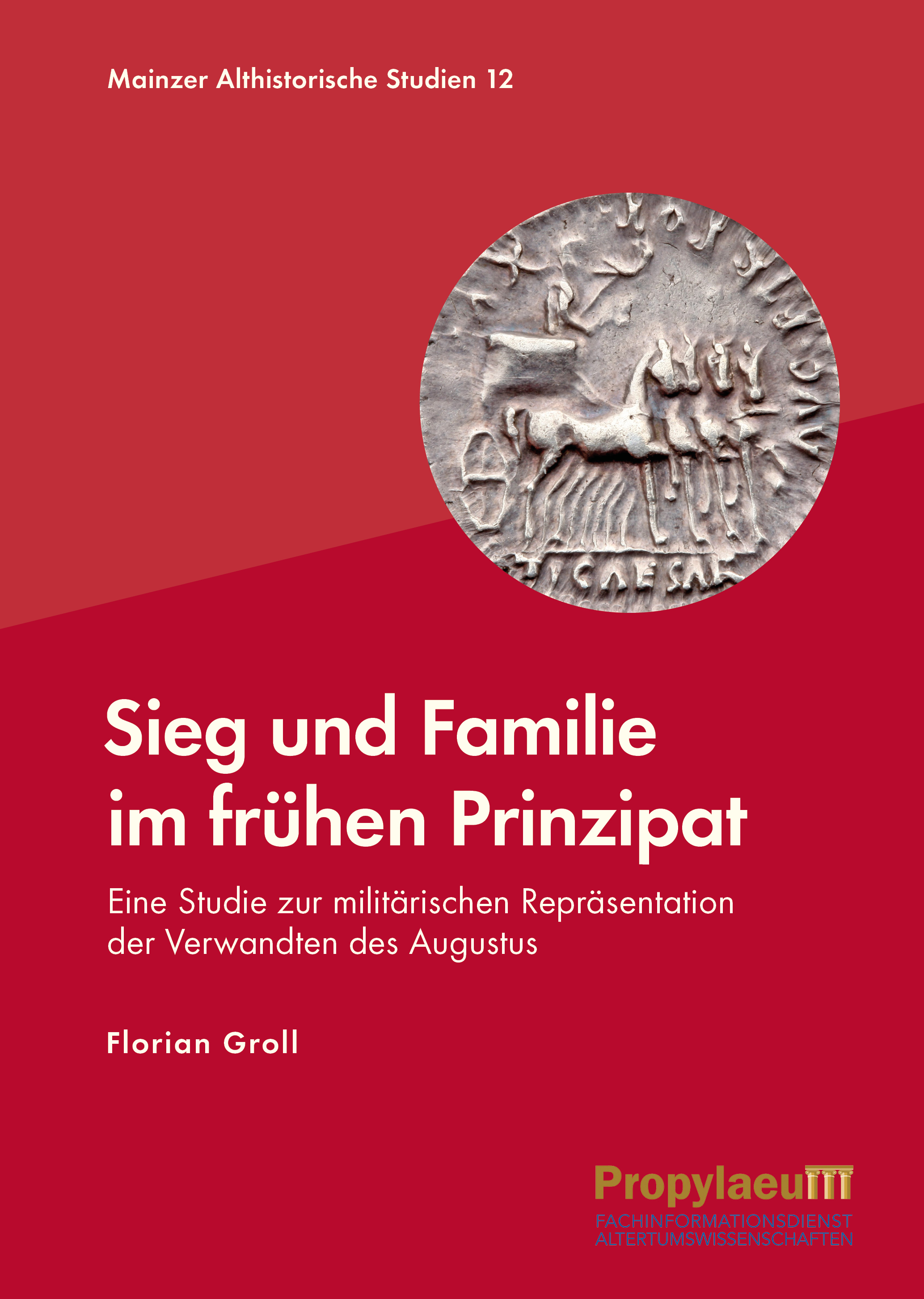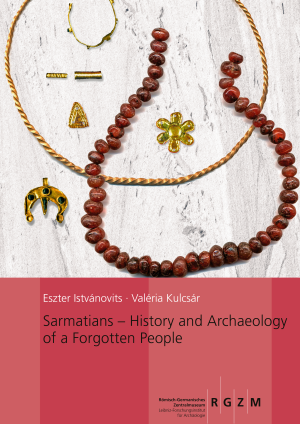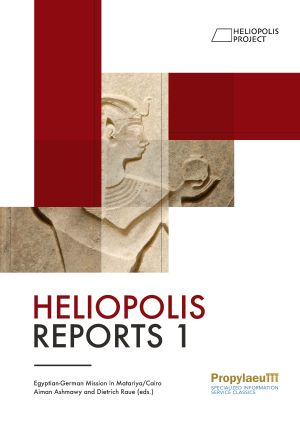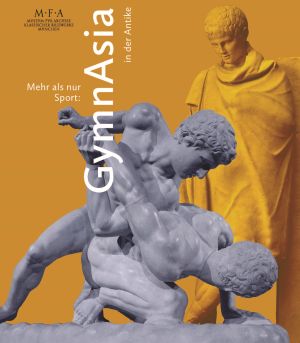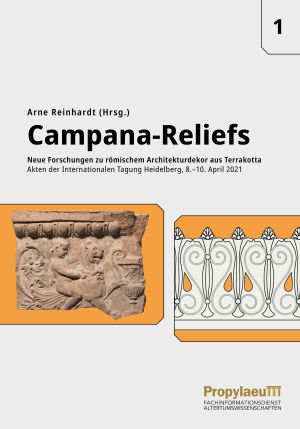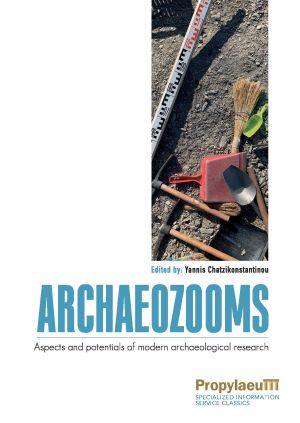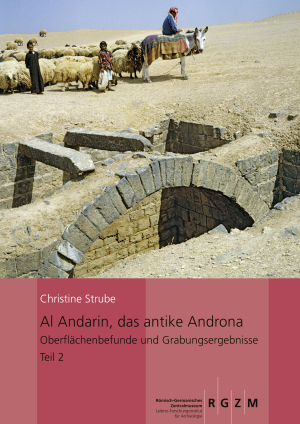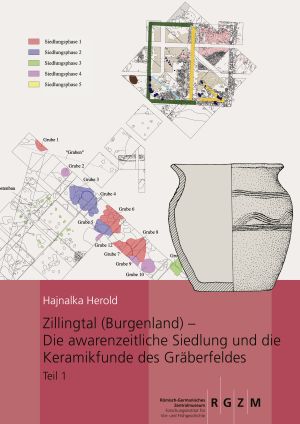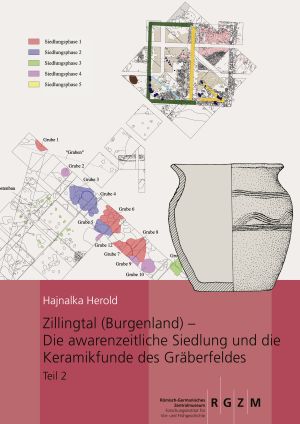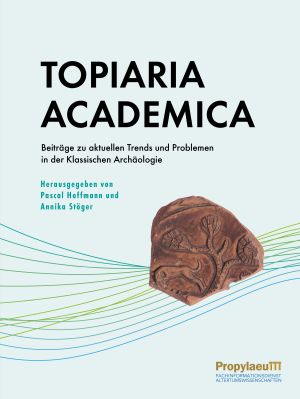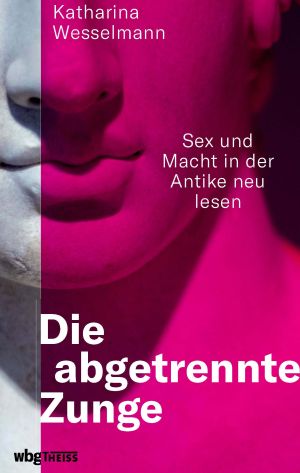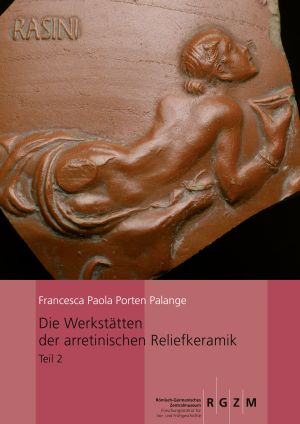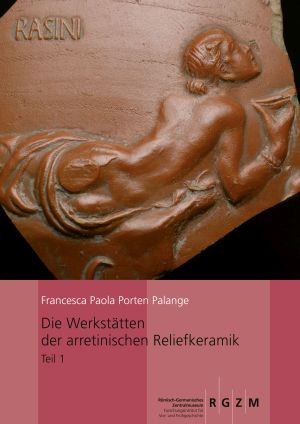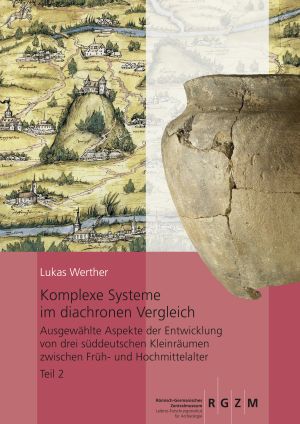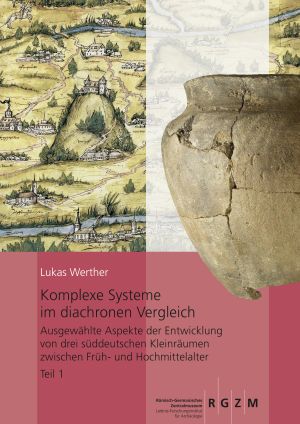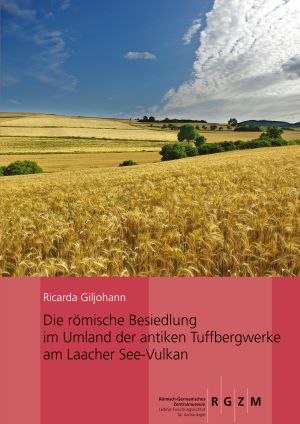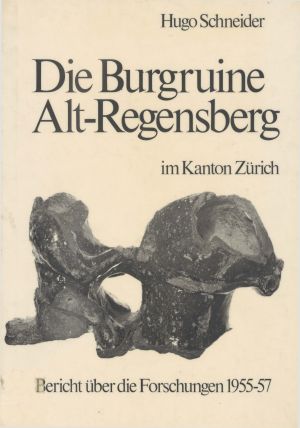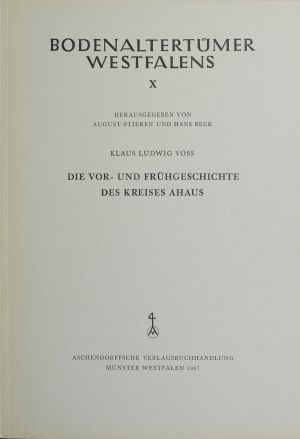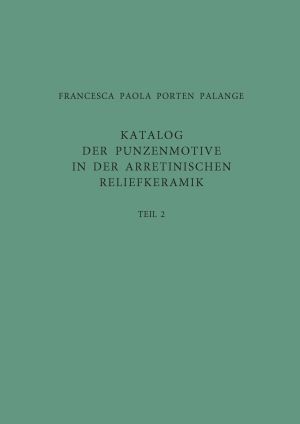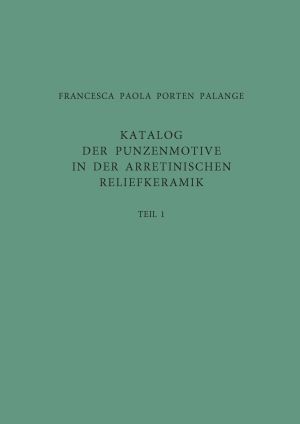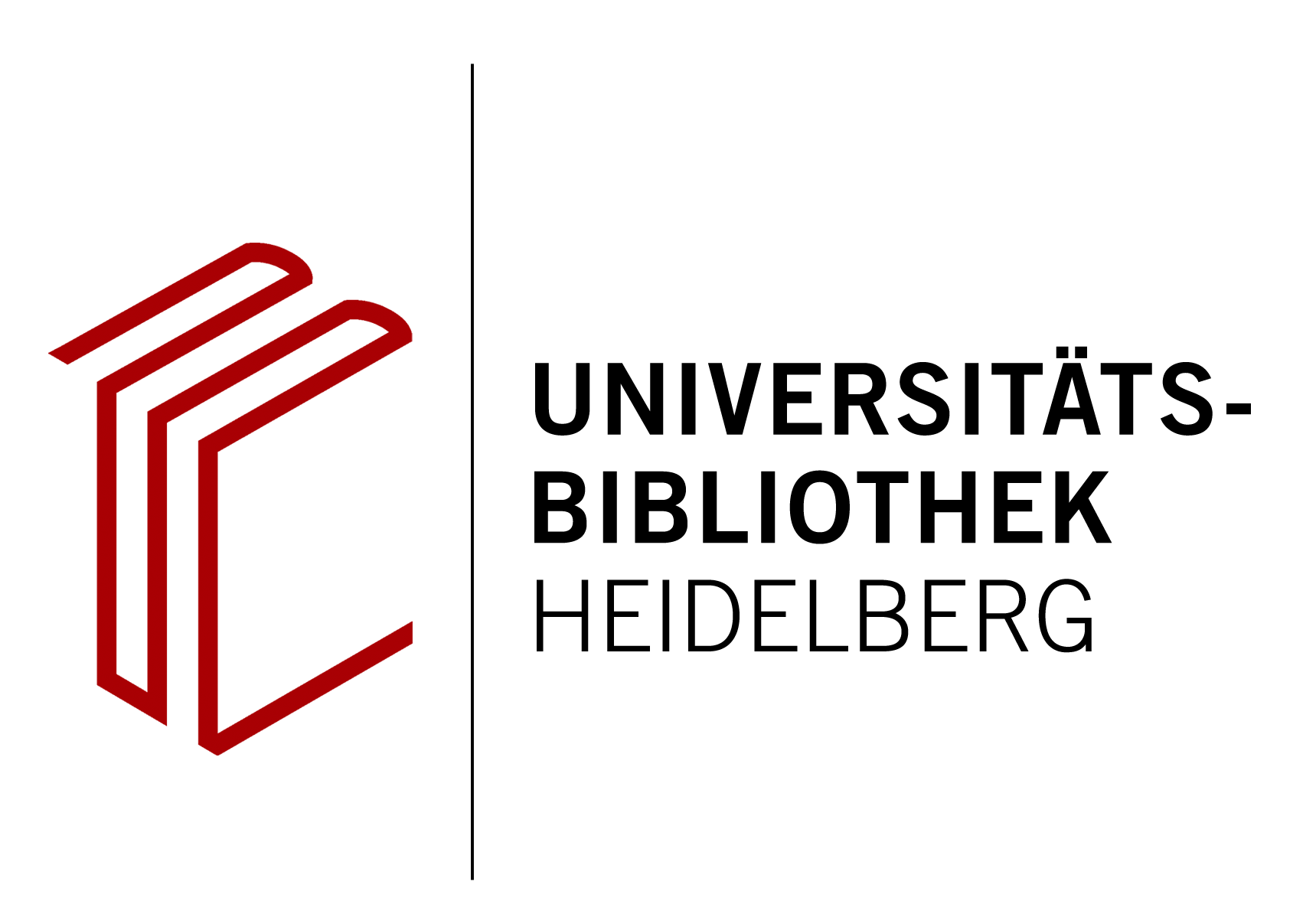Bücher
Die letzte Fahrt: Das urnenfelderzeitliche Wagengrab von Essenbach
Das 2011 im Zuge einer planmäßigen Ausgrabung freigelegte frühurnenfelderzeitliche Wagenbgrab von Essenbach (Lkr. Landshut, Niederbayern) ist ein wichtiger Neuzugang in der Sammlung des Germanischen Nationalmuseums. Der anlässlich einer Ausstellung zu diesem bedeutenden Befund erschienene Band stellt das Essenbacher Wagengrab vor und nimmt eine kulturgeschichtliche Einordnung in Gesellschaft, Wirtschaft und Religion der Urnenfelderzeit vor.
Die räumliche Organisation der Konzentration IIa von Gönnersdorf
Der Magdalénien-Fundplatz Gönnersdorf repräsentiert einen der europaweit seltensten Siedlungsbefunde des späten Jungpaläolithikums. Seine außergewöhnliche Erhaltung ermöglicht seit seiner Entdeckung 1968 einen beständigen Erkenntniszuwachs in Hinblick auf die Lebensweise eiszeitlicher Jäger und Sammler. So erfolgte bereits die grundlegende Untersuchung der Siedlungsstrukturen in den Großkonzentrationen I, III und IV. Die Behandlung der zentralen und zugleich fundreichsten Konzentration IIa stand bislang jedoch noch aus. Mit der vorliegenden Arbeit kann diese Lücke nun geschlossen werden.
Der Schwerpunkt der Analysen von K IIa liegt v.a. auf einer Rekonstruktion der alltäglichen Aktivitäten der ehemaligen Bewohner. Hierzu wird die räumliche Beziehung latenter Fundverteilungen zu den evidenten Befunden, wie dem zentralen Behausungsgrundriß, den Gruben und den Feuerstellen, ausführlich diskutiert. Hieraus sowie aus den Zusammensetzungsanalysen ergeben sich schließlich entscheidende Hinweise, die zu der Entwicklung eines gänzlich neuen Besiedlungsmodells, nicht nur für K IIa, sondern für den gesamten Fundplatz führen.
Archäologie und Geschichte der Krim in byzantinischer Zeit
Obwohl die Archäologie und Geschichte der byzantinischen Krim ein gut untersuchtes Thema ist, wurden die Forschungsergebnisse jenseits des russischen Sprachraums nur schwach rezipiert.
Die hier vorgelegte Monographie des international renommierten Archäologen Aleksandr I. Ajbabin, die aus einem gemeinsamen Projekt des RGZM und der Ukrainischen Akademie der Wissenschaften hervorgegangen ist, soll dabei helfen, diesen wesentlich vom Spannungsverhältnis von Steppenvölkern und Byzantinischem Reich geprägten Raum neu und verstärkt wahrzunehmen.
Die gründlich überarbeitete und erweiterte Übersetzung des erstmals 1999 in russischer Sprache erschienenen Werkes präsentiert dem deutschen Publikum eine umfassende Übersicht über das teilweise schwer zugänglich publizierte Fundmaterial und seine Chronologie.
Die spätrömischen Schiffswracks aus Mainz: Schiffsarchäologisch-technikgeschichtliche Untersuchung spätantiker Schiffsfunde vom nördlichen Oberrhein
Als einzige Vertreter ihrer Art werfen die Schiffsfunde aus Mainz neues Licht auf die spätrömische Militärgeschichte. Ihr Erhaltungszustand gewährt Einblick in teils komplexe bootsbauliche Verfahrenstechniken und Maßnahmen, aus denen Verflechtungen mit dem romano-keltischen Seeschiff Nordwesteuropas hervorgehen; zugleich ist auch mediterranes Know-how erkennbar. Spuren des antiken Vermessungs- und Konstruktionswesens künden von besonderen planerischen und arbeitsorganisatorischen Leistungen. Überdies bietet sich nirgendwo sonst so umfassend Gelegenheit zur strukturellen Untersuchung römerzeitlicher Riemenantriebssysteme und wie sie mit dem Menschen zusammenwirken.
Als schiffsarchäologisch-technikgeschichtliche Auswertung angelegt und komparativ weit ausgreifend, erschließt das Buch eine sowohl chronologisch als auch schiffstypologisch differenzierende Neuordnung des Fundstoffs. Eine akribische Dokumentation in Wort und Bild bildet die Grundlage für Planrekonstruktionen, die Form, Größe, Ausstattung und die Verwendbarkeit der Fahrzeuge nachzeichnen.
Children on Choes
In der Zeit zwischen der zweiten Hälfte des fünften Jahrhunderts v. Chr. und dem ersten Viertel des folgenden Jahrhunderts lässt sich eine Zunahme der Darstellung von Kindern auf attischen Vasen beobachten. Eine systematische Analyse dieser Darstellungen hat ergeben, dass die Künstler nicht das Leben der athenischen Kinder, ihre Aktivitäten und die Wahrnehmung ihrer Eltern durch diese dokumentierten. Die Untersuchung hat ergeben, dass die Darstellungen von Kindern auf den Choen wertvolle Hinweise und historische Informationen über das Selbstbild der athenischen Männer sind.
Sieg und Familie im frühen Prinzipat: Eine Studie zur militärischen Repräsentation der Verwandten des Augustus
In diesem Buch wird untersucht, inwieweit und mit welchen Darstellungsstrategien die Familie des ersten römischen princeps Augustus im stadtrömischen Kommunikationsraum militärisch inszeniert wurde. Die Arbeit bedient sich dazu einer breiten Quellenbasis. Im Vordergrund stehen zeitgenössische Schriftquellen – insbesondere Texte der Dichter Vergil, Horaz und Ovid. Daneben werden auch die stadtrömische Monumentalarchitektur sowie Berichte über in Rom veranstaltete Feierlichkeiten der Familie des Augustus in den Blick genommen. Auf dieser Grundlage zeichnet die Arbeit ein facettenreiches, polyphones Bild des stadtrömischen Diskurses um Roms neue erste Familie und ihre militärischen Leistungen.
Sarmatians – History and Archaeology of a Forgotten People
Ziel dieses Buches ist es, eine umfassende Einführung in die Sarmaten zu geben, das Volk von entscheidender Bedeutung in der Welt der iranischsprachigen Nomaden.
Der erste Teil des Bandes behandelt die Geschichte und Archäologie dieser Stämme von ihrer Entstehung bis zur Invasion der Hunnen, nach der die iranische Vorherrschaft im Steppengürtel durch die Macht der türkischen Nomaden abgelöst wurde. Auf der Grundlage literarischer Quellen und archäologischer Funde wird im zweiten Teil die Geschichte der Sarmaten im Karpatenbecken vom 1. bis 5. nachchristlichen Jahrhundert zusammengefasst. Ein besonderer Schwerpunkt liegt dabei auf den Steppenbeziehungen der Alföld-Sarmaten, den Neuerungen durch neue Migrationswellen und deren Auswirkungen auf die einheimische Bevölkerung. Der dritte Teil gibt einen Ausblick auf das Nachleben der Sarmaten, deren Spuren sich von Britannien bis nach China erstrecken.
Helіopolіs Reports 1
Seit 2012 arbeitet eine ägyptisch-deutsche Forschungsunternehmung im Tempelbezirk von Heliopolis im Kairener Stadtteil von Matariya. Unter den Umständen fortschreitender städtischer Bebauung wurden hier in mehreren Arealen Befunde der Tempelbauten und ihrer zugehörigen Infrastruktur untersucht. Die Publikation gibt einen ersten Überblick zu den Ergebnissen und stellt eine Auswahl wichtiger Funde vor.
Die Ausgrabung ist eine Gemeinschaftsunternehmung des ägyptischen Ministeriums für Tourismus und Antiken, der Universität Leipzig, der Hochschule Mainz und des Deutschen Archäologischen Instituts Abt. Kairo. Die Arbeiten wurden durch die Deutsche Forschungsgemeinschaft, die Gerda Henkel Stiftung sowie weitere Stiftungen und individuelle Förderer ermöglicht.
Mehr als nur Sport: GymnAsia in der Antike
Das zweisprachige Begleitbuch zur Ausstellung „Mehr als nur Sport: GymnAsia in der Antike“ ist im Rahmen eines deutsch-französischen Forschungsprojekts entstanden, das sich mit der Geschichte des griechischen Gymnasions im antiken Kleinasien, einem Teil der heutigen Türkei, befasst.
Der Band gibt einen Überblick über die Verbreitung und Entwicklung des Gymnasions und seine Rolle in Gesellschaft, Politik und Religion von den Anfängen im archaischen Griechenland bis in die Spätantike. Ein besonderes Augenmerk liegt zudem auf der Verbindung zwischen dem Gymnasion und der für die griechische Antike so prägenden Wettkampfkultur.
Campana-Reliefs: Neue Forschungen zu römischem Architekturdekor aus Terrakotta: Akten der Internationalen Tagung in Heidelberg, 8.–10. April 2021
Bauschmuck aus gebranntem Ton stellt ein Charakteristikum der römischen Architektur zur Zeit der Republik und der frühen Kaiserzeit dar. Figurenreich und farbenprächtig schmückte er private und öffentliche Bauten der Eliten.
Obwohl eigentlich ein anschlussfähiges Phänomen, steht die Erforschung dieses Zweigs der römischen Architektur- und Kulturgeschichte doch in mehrerlei Hinsicht hinter anderen Gattungen zurück; die Fachliteratur zum Thema ist verstreut und auf bestimmte Aspekte festgelegt. Der vorliegende Band versammelt erstmals aktuelle internationale und interdisziplinäre Forschungen zum Terrakotta-Schmuck römischer Architektur, bildet den gegenwärtigen Wissensstand ab und zeigt Perspektiven für die weitere Erforschung auf. Die 16 Beiträge umfassen ein breites Spektrum von der Entstehung der Gattung und ihrem Formenspektrum über die reiche Bilderwelt und ihre Farbigkeit bis hin zu Fragen der Sammlungs- und Rezeptionsgeschichte.
ARCHAEOZOOMS: Aspects and potentials of modern archaeological research
„ARCHAEOZOOMS“ ist das Ergebnis einer gemeinsamen Forschungsarbeit von Nachwuchsforschern*innen. Wissenschaftler*innen aus Griechenland stellen ihr Forschungsgebiet vor und erläutern einige ihrer wichtigsten archäologischen Forschungsfragen. Traditionelle Methoden und interdisziplinäre Ansätze werden kombiniert, um einen offenen Dialog zu schaffen und gleichzeitig einige aktuelle archäologische Forschungstrends und -perspektiven in Griechenland und im Ausland zu skizzieren. Das Hauptziel der Publikation besteht darin, die methodischen Instrumente zu vermitteln, die derzeit in bestimmten archäologischen Forschungsbereichen eingesetzt werden. Die Vielfalt der behandelten Themen verdeutlicht die vielseitigen Kompetenzen, die junge Archäolog*innen auf ihrem beruflichen Weg erwerben müssen.
Al Andarin, das antike Androna: Oberflächenbefunde und Grabungsergebnisse: die Umfassungsmauer und das Kastron, Teil 2
Al Andarin, das antike Androna, überdeckt mit seinen zwei Umfassungsmauern, zehn Kirchen, einem öffentlichen Bad und einem großen Militärbau (Kastron) ein Areal von 155 ha und ist damit einer der größten Ruinenorte der wasserarmen Steppengebiete Zentralsyriens. Als erste von ca. 300 Siedlungen dieser Gebiete wurde Androna 1997-2007 durch Grabungen und Surveys erforscht.
Die vorliegenden Ergebnisse zu den Oberflächenbefunden, zum Kastron (559 n. Chr.) und zu den Mauerringen machen nicht nur die Geschichte Andronas im 5.-7. Jahrhundert n. Chr. greifbar, sie zeichnen darüber hinaus ein überaus lebendiges Bild von der Beziehung zwischen Land und Stadt in spätantik-frühbyzantinischer Zeit.
s. Band 1
Zillingtal (Burgenland) – Die awarenzeitliche Siedlung und die Keramikfunde des Gräberfeldes: Teil 1
Die Bearbeitung der frühmittelalterlichen Siedlung (7.-8. Jahrhundert n. Chr.) sowie der Keramikfunde des zugehörigen Gräberfeldes konzentriert sich auf drei Schwerpunkte: awarenzeitliche Siedlungsbefunde und Siedlungsstrukturen im Karpatenbecken, Keramikproduktion und Keramikgebrauch in der Awarenzeit sowie awarenzeitliche Traditionen in Zillingtal bei der Beigabe von Keramikgefäßen ins Grab.
Bei den Siedlungsbefunden interessiert vor allem die frühmittelalterliche Wiederverwendung der römischen Ruinen. Die Auswertung des Fundmaterials konzentriert sich auf die Keramikfunde, mit denen zusammen auch die Keramikgefäße des awarenzeitlichen Gräberfeldes untersucht werden. Dazu dienen archäologische und archäometrische Analysen sowie Methoden der experimentellen Archäologie. Die gewonnene Chronologie der Grabgefäße und die anthropologischen Daten der Bestatteten bilden die Basis für die Analyse der awarenzeitlichen Traditionen bei der Beigabe von Keramikgefäßen in die Gräber.
Teil 2 hier.
Zillingtal (Burgenland) – Die awarenzeitliche Siedlung und die Keramikfunde des Gräberfeldes: Teil 2
Die Bearbeitung der frühmittelalterlichen Siedlung (7.-8. Jahrhundert n. Chr.) sowie der Keramikfunde des zugehörigen Gräberfeldes konzentriert sich auf drei Schwerpunkte: awarenzeitliche Siedlungsbefunde und Siedlungsstrukturen im Karpatenbecken, Keramikproduktion und Keramikgebrauch in der Awarenzeit sowie awarenzeitliche Traditionen in Zillingtal bei der Beigabe von Keramikgefäßen ins Grab.
Bei den Siedlungsbefunden interessiert vor allem die frühmittelalterliche Wiederverwendung der römischen Ruinen. Die Auswertung des Fundmaterials konzentriert sich auf die Keramikfunde, mit denen zusammen auch die Keramikgefäße des awarenzeitlichen Gräberfeldes untersucht werden. Dazu dienen archäologische und archäometrische Analysen sowie Methoden der experimentellen Archäologie. Die gewonnene Chronologie der Grabgefäße und die anthropologischen Daten der Bestatteten bilden die Basis für die Analyse der awarenzeitlichen Traditionen bei der Beigabe von Keramikgefäßen in die Gräber.
Teil 1 hier.
TOPIARIA ACADEMICA: Beiträge zu aktuellen Trends und Problemen in der Klassischen Archäologie
Wie ein Baum mit vielen Ästen, kann die Klassische Archäologie im Angesicht der Herausforderungen dieses Jahrhunderts nur florieren, wenn alle ihre verschiedenen Aspekte gleichermaßen gepflegt und gefördert werden. Dieser Band versammelt eine Reihe junger NachwuchswissenschaftlerInnen der Klassischen Archäologie, die über Europa verteilt, doch über ihre gemeinsame Mentorin Caterina Maderna vereint sind. Darin werden aktuelle Forschungen und Projekte zu einigen gegenwärtigen Trends in den Altertumswissenschaften vorgestellt. Diese reichen von der Rolle von Museen und sozialen Medien über neue Blicke auf antike Skulptur und Numismatik hin zur Anwendung zeitgemäßer Methoden in Ausgrabung und Analyse.
Die abgetrennte Zunge: Sex und Macht in der Antike neu lesen
Die griechisch-römische Antike hat die westlichen Kulturen stark beeinflusst – auch im Hinblick auf Frauen- und Männerbilder. Wer kennt sie nicht, die Sagen von Göttern, die schöne Nymphen verführen? Die Begeisterung eines Apoll für seine Daphne oder die Verzweiflung der verlassenen Dido finden sich ähnlich auch heute in Filmen oder Songs wieder: can’t live, if living is without you!
Doch sind die Texte von Homer, Ovid & Co. noch zeitgemäß – ja, sind sie überhaupt noch salonfähig? Ist Apoll eigentlich ein Vergewaltiger, Dido das Opfer einer ›toxischen Männlichkeit‹? Katharina Wesselmann liest klassische antike Texte neu und findet überraschende Parallelen zu unserer Gegenwart.
Die Werkstätten der arretinischen Reliefkeramik: Teil 2
Dem »Katalog der Punzenmotive in der arretinischen Reliefkeramik« (RGZM Kataloge Vor- und Früh geschichtlicher Altertümer 38, 1-2 [2004]) folgen nun diese beiden Bände über die Werkstätten, die von ca. 30 v.Chr. an in Arezzo und Umgebung Reliefkeramik produziert haben.
Im ersten Band werden insgesamt 22 Werkstätten analysiert, ergänzt durch ein Kapitel über den Töpfer Anteros, von dem wir noch nicht wissen, für welche Manufaktur er gearbeitet hat. Die Werkstätten sind völlig neu bearbeitet, und ihr Repertoire ist umfassender beschrieben. Hinzu kommen viele bis dato unbekannte Punzenmotive sowie gegenüber der bisherigen Forschung notwendige Neuzuweisungen, wodurch wir – obwohl das Material des Museums in Arezzo immer noch so spärlich veröffentlicht bleibt – von der Gattung ein deutlich klareres und genaueres Bild erhalten und das Repertoire der einzelnen Offizinen an Reichhaltigkeit gewinnt.
Der zweite Band enthält für jede Werkstatt in zeichnerischer Darstellung die Namensstempel und die bislang bekannten Profile, außerdem die wichtigsten Randmotive und die häufigsten vegetabilischen Ornamente, die für die korrekte und sichere Zuschreibung eine so entscheidende Rolle spielen. Ebenso sind – um die im ersten Band beschriebenen Figurenreihen besser nachvollziehen zu können – auch die bedeutungsvollen Zyklen anhand zahlreicher Bildkombinationen sowie bislang singulär überlieferte Zusammensetzungen figürlicher und ornamentaler Motive dargestellt.
Zu Band 1
Die Werkstätten der arretinischen Reliefkeramik: Teil 1
Dem »Katalog der Punzenmotive in der arretinischen Reliefkeramik« (RGZM Kataloge Vor- und Früh geschichtlicher Altertümer 38, 1-2 [2004]) folgen nun diese beiden Bände über die Werkstätten, die von ca. 30 v.Chr. an in Arezzo und Umgebung Reliefkeramik produziert haben.
Im ersten Band werden insgesamt 22 Werkstätten analysiert, ergänzt durch ein Kapitel über den Töpfer Anteros, von dem wir noch nicht wissen, für welche Manufaktur er gearbeitet hat. Die Werkstätten sind völlig neu bearbeitet, und ihr Repertoire ist umfassender beschrieben. Hinzu kommen viele bis dato unbekannte Punzenmotive sowie gegenüber der bisherigen Forschung notwendige Neuzuweisungen, wodurch wir – obwohl das Material des Museums in Arezzo immer noch so spärlich veröffentlicht bleibt – von der Gattung ein deutlich klareres und genaueres Bild erhalten und das Repertoire der einzelnen Offizinen an Reichhaltigkeit gewinnt.
Der zweite Band enthält für jede Werkstatt in zeichnerischer Darstellung die Namensstempel und die bislang bekannten Profile, außerdem die wichtigsten Randmotive und die häufigsten vegetabilischen Ornamente, die für die korrekte und sichere Zuschreibung eine so entscheidende Rolle spielen. Ebenso sind – um die im ersten Band beschriebenen Figurenreihen besser nachvollziehen zu können – auch die bedeutungsvollen Zyklen anhand zahlreicher Bildkombinationen sowie bislang singulär überlieferte Zusammensetzungen figürlicher und ornamentaler Motive dargestellt.
Zu Band 2
Komplexe Systeme im diachronen Vergleich: Ausgewählte Aspekte der Entwicklung von drei süddeutschen Kleinräumen zwischen Früh- und Hochmittelalter
Gesellschaft und Umwelt sind komplexe Systeme, die auch im Früh- und Hochmittelalter einem dauernden Wandel unterworfen waren. Dieser Veränderungsprozess zeigt jedoch in verschiedenen zeitlichen Phasen und Regionen eine jeweils spezifische Dynamik. Die vorliegende Studie analysiert die Strukturentwicklung von drei süddeutschen Kleinräumen in Mittelfranken, Unterfranken und Schwaben zwischen dem 6. und 13. Jahrhundert auf unterschiedlichen Ebenen. Ausgehend von archäologischen Quellen, schriftlichen Zeugnissen und Geoarchiven werden durch einen systematischen diachronen Vergleich individuelle Besonderheiten und überregionale Gemeinsamkeiten herausgearbeitet. Ein spezielles Augenmerk liegt dabei auf dem Wandel um das Jahr 1000 und den Ungarneinfällen als möglicher auslösender Faktor. Gerade um die Jahrtausendwende zeigt sich in den drei Mikrostudien allerdings eine besonders ausgeprägte Individualität. Als Ursachen dieser regionsspezifischen Sonderwege werden ökonomische Prozesse, ökologische Krisen sowie politisch-besitzrechtliche und soziale Umbrüche diskutiert.
Zu Band 1
Komplexe Systeme im diachronen Vergleich: Ausgewählte Aspekte der Entwicklung von drei süddeutschen Kleinräumen zwischen Früh- und Hochmittelalter
Gesellschaft und Umwelt sind komplexe Systeme in dauerndem Wandel. Diese Studie analysiert die Strukturentwicklung von drei süddeutschen Kleinräumen zwischen dem 6. und 13. Jahrhundert. Ausgehend von archäologischen, schriftlichen und geowissenschaftlichen Quellen werden durch einen systematischen diachronen Vergleich individuelle Besonderheiten und überregionale Gemeinsamkeiten herausgearbeitet. Ein spezielles Augenmerk liegt auf dem Wandel um das Jahr 1000. In dieser Zeit zeigt sich in den drei Mikrostudien eine besonders ausgeprägte Individualität. Als Ursachen dieser regionalen Sonderwege werden ökonomische, ökologische soziale und politische Prozesse diskutiert.
Zu Band 2
Die römische Besiedlung im Umland der antiken Tuffbergwerke am Laacher See-Vulkan
Am Rhein nördlich der Mosel trafen Caesars Truppen auf eine mit Gutshöfen besiedelte, fruchtbare Beckenlandschaft und einen florierenden Mühlsteinhandel. Die germanische Okkupations- und Urbanisierungspolitik des Kaisers Augustus bedeutete u.a. den Beginn der Steinbauweise in Deutschland. Vor allem die Tuffvorkommen um den Laacher See-Vulkan traten ab diesem Zeitpunkt in den Fokus der römischen Bau-meister. Bereits in früheströmischer Zeit entstand hier eine antike Industrielandschaft, für deren Entwicklung die Voraussetzungen – qualitative, vulkanische Gesteine und der nur 5 km weit entfernte Rheinhafen von Andernach – besonders günstig waren.
In diesem Buch werden mehr als 200 römische Siedlungsfundstellen und die gut 450 Jahre andauernde Entwicklung der Gesellschaft in diesem Teil von Obergermanien behandelt. Die Einführung der Tuffsteinindustrie und die Stationierung römischer Truppenverbände ließen rasch eine wohlhabende, provinzialrömische Mischkultur entstehen. Selbst nach gravierenden Zerstörungen im 3. Jahrhundert entwickelte sich im fortgeschrittenen 4. Jahrhundert erneut eine prosperierende Gesellschaft bis in die erste Hälfte des 5. Jahrhunderts, unter zunehmender Zuwanderung von Germanen. Bereits bekannte herausragende Funde, wie das Nickenicher Nischengrabmal oder die Krufter Säule, werden im Gesamtkontext betrachtet. Neu vorgelegt wird archäologisches Fundmaterial aus dem 1.-5. Jahrhundert, vor allem aus Gräbern der frühen Kaiserzeit und der ersten Hälfte des 2. Jahrhunderts. Über 20 Wasserleitungsfunde, meist in Qanatbauweise, sowie eine mutmaßlich zivile Bergmannssiedlung beleuchten Besonderheiten der ländlichen Besiedlung im Umland der römischen Tuffbergwerke.
Die Burgruine Alt-Regensberg im Kanton Zurich: Bericht über die Forschungen 1955-57
Die Ausgrabung und Sanierung der in der Nähe der Stadt Zürich gelegenen Burgruine «Altburg», Stammsitz der Freiherren von Regensberg, erfolgte im Auftrag des Kantonalen Hochbauamtes Zürich und in enger Zusammenarbeit mit dem Schweizerischen Landesmuseum. Sie bot die Gelegenheit, eine historisch bedeutende frühe Burganlage exemplarisch zu erforschen und zu dokumentieren. Die Burg selbst liegt auf einem Moränenhügel, der im ausgehenden 11. Jh. von den Regensbergern befestigt worden war und um 1200 unter den Regensbergern wie auch im 14. Jh. unter den Herren von Landenberg einen Ausbau erlebte. Ein zeitgemässer Umbau um 1460 durch Rudolf Mötteli stiess auf den Widerstand der Stadt Zürich, welche die Anlage schliesslich übernahm und zerfallen liess.
Die Publikation verbindet Besitzer- und Baugeschichte und widmet insbesondere den Freiherren von Regensberg breiten Platz, gefolgt von einer detailreichen Präsentation der Grabungsbefunde. Einzeln vorgestellt werden die vier Hauptetappen vom hohen bis ins ausgehende Mittelalter sowie – mit einem bebilderten Katalog – die mehrere Hundert Objekte umfassenden Funde, aufgegliedert nach Ofenkeramik, Topf- und Geschirrkeramik, Eisen, Münzen, Buntmetall und Knochen.
Katalog der Punzenmotive in der arretinischen Reliefkeramik: Teil 2
Der Katalog erschließt umfassend die Punzenmotive der seit etwa 30 v.u.Z in Arezzo und Umgebung produzierten Reliefkeramik.
Zu Band 1
Katalog der Punzenmotive in der arretinischen Reliefkeramik: Teil 1
Der Katalog erschließt umfassend die Punzenmotive der seit etwa 30 v.u.Z in Arezzo und Umgebung produzierten Reliefkeramik.
Zu Band 2



